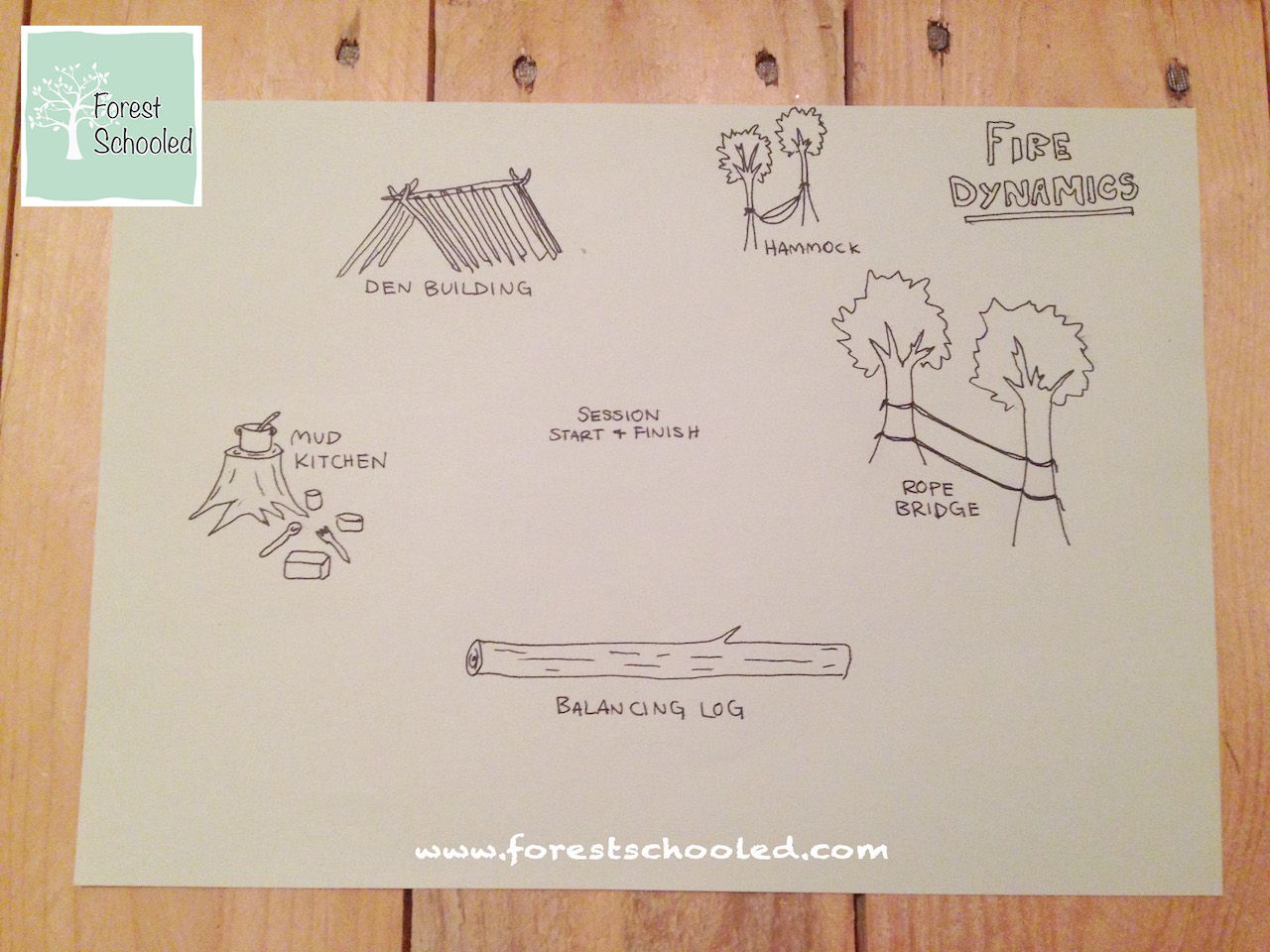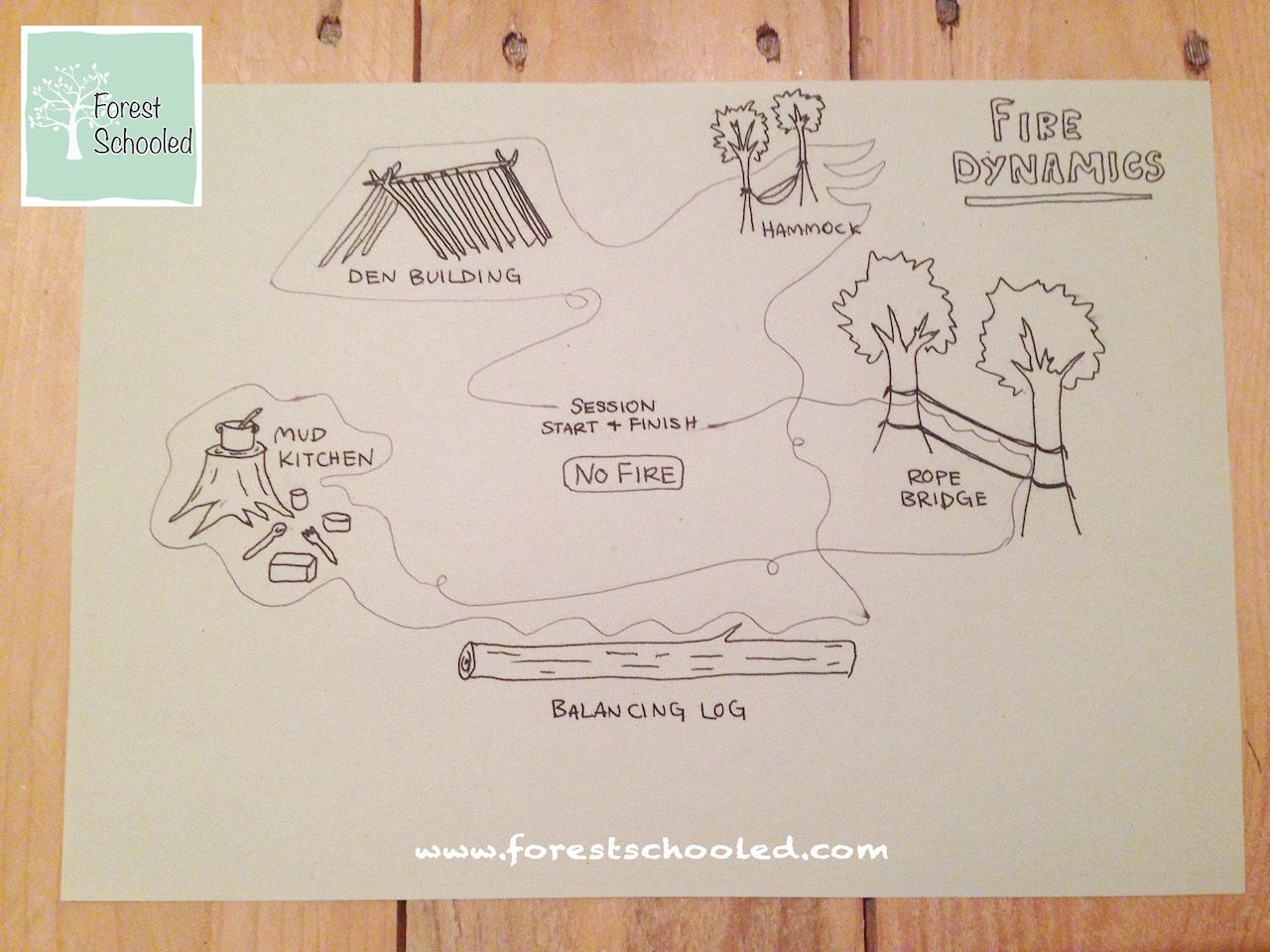
Blog
Stories from my personal journey learning about and delivering Nature-rooted programs across three different countries
Fire Dynamics...
Caylin (Forest Schooled)

Empty space, drag to resize
Has anyone else noticed the difference that having a fire makes at a session? I'm sure you have, at least to some degree. In fact, it's not really news to me either. I have always 'felt' or 'sensed' how fire impacts people on both a personal and social level, but I guess I've never really thought about it more deeply.
However, this week I led two parent and child sessions in which one had a fire and the other one didn't and this led me to reflect on it. I suppose having these two sessions just a day apart provided the stark contrast necessary for me to realise more clearly the impact that fire can have on a group dynamic. Both sessions took place at exactly the same location, with the same activities, the same age range of children, and even the same weather (a miracle, really, since they took place on different days!). The participants were parents and children, none of whom I had met before and most had never met each other either. The main difference (besides the people) was during the second one, we had a fire.
I've chosen to use drawings to better illustrate what I noticed about the difference between the two sessions... This is a simple map representing the setting and some activities that were available for participants to take part in:

Now, here's the same map, but I've drawn a line representing the typical movements I observed for a parent/child throughout the session.
WITHOUT a fire and WITH a fire:


Quite a difference don't you think? Well, here are some more things I observed:
No fire:
- Participants moved from one activity to the next. Almost like tourists taking a 'tour' of the site, they would pause briefly at each 'stop' before moving on to the next thing.
- A few people chatted to each other, but for the most part participants stuck to their own family group and did not intermingle much.
- When people gathered in a particular area (for example, the mud kitchen) everyone would face a different direction, sometimes with their backs towards each other, which eliminated the chance of making eye contact or engaging in conversation.
With fire:
- People hung around the fire area more than any other spot, making it feel like a 'home base'.
- When transitioning between activities/exploring, people came back to the fire first before wandering off to do something else.
- When people gathered around the fire, everyone faced inward towards the fire (and each other), but it didn't feel awkward when no one had anything to say.
- Some children and parents chose to just sit by the fire and many stared at it quietly for minutes at a time.
- And here's the biggest difference: We all TALKED to each other more. We talked about how good the heat from the fire felt on our cold hands, about how mesmerising the flames were, about how the smoke tends to follow that ONE person every time! These comments acted as icebreakers which led onto many other conversations that allowed us to get to know each other better.
So it seems to me that having a fire appeared to speed up the process of social connection by creating a dynamic that felt more sociable and calming. The fire also offered a safe place for individual quiet reflection.
Both sessions were only 2 hours long, but at the end of the one with the fire people seemed more relaxed, more friendly with each other and with me, and I felt I had got to know the participants much better.
Now of course the two sessions involved different people with different sorts of personalities and I'm not denying that this would have also strongly influenced the dynamic. My observations are not a scientific study by any means, but rather an anecdotal observation. Nevertheless, I feel it still has value.
My argument is not that fire creates connection, but rather that, for whatever reason, it seems to facilitate connection to self and to others at a quicker rate. It creates a focal point. It puts people at ease. It can even 'stop time' in the sense that while tending to or staring into a fire, we tend to forget, even if just for a moment, about that long to do list we all hold in the back of our heads.
Children are also able to sit still for much longer while staring into the flames.
I like the following quote from Coyote's Guide to Reconnecting with Nature (2010) which relates quite well to this topic. It describes some benefits having a fire can have on both individuals and groups:
“Staring into a fire puts you into a trance, practically hypnotized by the continually changing flickers and flames. Some call it 'Survival TV.' However, unlike most TV, staring at fire for hours will do wonders for the brain patterns of those you mentor. As logs collapse and burn and shift around, people overcome fears of fire and learn to trust the process. They learn how things cook, both in pots and at the end of sticks. They practice sitting still. They move into storytelling mode around a fire. They learn to listen to other people with silence and thoughtfulness. Tending the dynamic process of a Central Fire seems to translate to moving through life with confidence, patience, and wonder. You can see it in their eyes. So if you have the opportunity in your program, invite fire-tending as a central part of your learning” (Young et al., 2010, pg. 181).
“Staring into a fire puts you into a trance, practically hypnotized by the continually changing flickers and flames. Some call it 'Survival TV.' However, unlike most TV, staring at fire for hours will do wonders for the brain patterns of those you mentor. As logs collapse and burn and shift around, people overcome fears of fire and learn to trust the process. They learn how things cook, both in pots and at the end of sticks. They practice sitting still. They move into storytelling mode around a fire. They learn to listen to other people with silence and thoughtfulness. Tending the dynamic process of a Central Fire seems to translate to moving through life with confidence, patience, and wonder. You can see it in their eyes. So if you have the opportunity in your program, invite fire-tending as a central part of your learning” (Young et al., 2010, pg. 181).
Fire has the ability to help us to connect to each other, take time for ourselves, and admire a spectacle of the natural world that we too easily take for granted. If we use that as a tool, it's really quite powerful...
P.S. For more information on why this sort of connection is important watch this inspiring video of Jon Young. It's a long one, but well worth it. You can even put it on in the background like a podcast if you need to ;) References:
Young, J., Haas, E., McGown, E. and Louv, R. (2010) Coyote’s guide to connecting with nature. 2nd edn., OWLLink Media, Santa Cruz, CA, United States.
Write your awesome label here.
More Posts
WANT TO GET FOREST SCHOOLED TOO?
Subscribe to my email letters, something special from me to you so we can learn together. Each one is filled with heart-felt stories from the forest, resources you may find useful, and things that hopefully bring a smile too.
Thank you!
© by FOREST SCHOOLED
